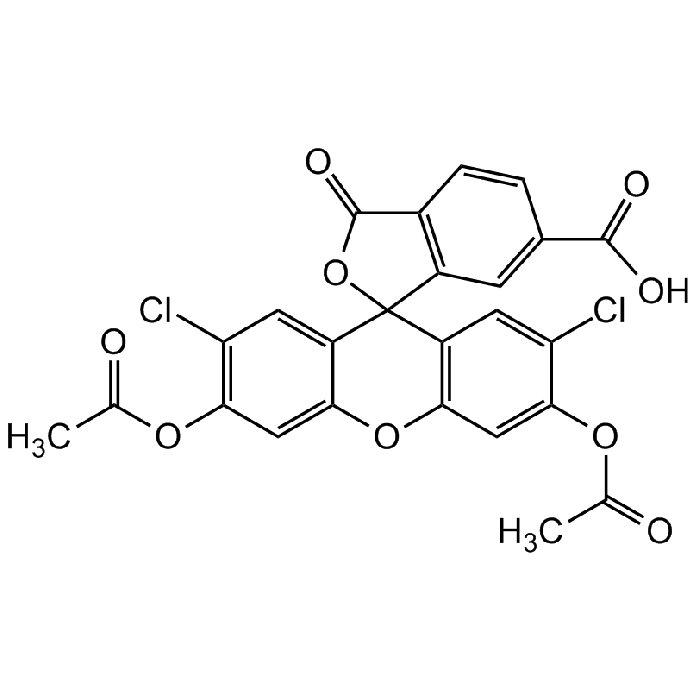Cookie Policy: This site uses cookies to improve your experience. You can find out more about our use of cookies in our Privacy Policy. By continuing to browse this site you agree to our use of cookies.
Chemodex
6-Carboxy-2',7'-dichlorofluorescein DA

| Product Details | |
|---|---|
| Synonyms | 6-CDCF DA; 6-Carboxy-DCF DA |
| Product Type | Chemical |
| Properties | |
| Formula |
C25H14CI2O9 |
| MW | 529.29 |
| CAS | 144489-10-1 |
| Source/Host Chemicals | Synthetic |
| Purity Chemicals | ≥97% (NMR) |
| Appearance | White to off-white powder. |
| Solubility | Soluble in DMSO or chloroform. Insoluble in water. |
| Identity | Determined by 1H-NMR. |
| Declaration | Manufactured by Chemodex. |
| Other Product Data |
Click here for Original Manufacturer Product Datasheet |
| InChi Key | FCNONRRKVDBQRD-UHFFFAOYSA-N |
| Smiles | O=C(O1)C2=C(C=C(C(O)=O)C=C2)C31C4=C(C=C(OC(C)=O)C(Cl)=C4)OC5=CC(OC(C)=O)=C(Cl)C=C53 |
| Shipping and Handling | |
| Shipping | AMBIENT |
| Short Term Storage | +4°C |
| Long Term Storage | -20°C |
| Handling Advice | Protect from light and moisture. |
| Use/Stability | Stable for at least 2 years after receipt when stored at -20°C. |
| Documents | |
| Product Specification Sheet | |
| Datasheet |
 Download PDF Download PDF |
Fluorescent indicator. The non-fluorescent 6-CDCF DA passively diffuses across the cell membrane and is hydrolyzed to fluorescent CDCF by intracellular esterases. It has been shown to be highly sensitive, long-lasting, cell-permeant and fluorescein-based tracer for quantifying ROS generation. Substrate for MRP2 and MRP3 and therefore the function of the efflux transporters (hepatic exrection) and multi-drug resistance associated proteins MRP2 and MRP3 can be measured using 6-CDCF DA. The CDCFDA/CDCF technoique provides a fast screening tool for MRP2 substrates and/or inhibitors. Spectral data: λEx=502nm; λEm=530nm.
(1) J.P. Kehrer & T. Paraidathathu; Free Rad. Res. Commun. 16, 217 (1992) | (2) M.J. Zamek-Gliszczynski, et al.; J. Pharmacol. Exp. Ther. 304, 801 (2003) | (3) S. Siissalo, et al.; Eur. J. Pharm. Biopharm. 71, 332 (2009) | (4) A.I. Pogue, et al.; Int. J. Mol. Sci. 13, 9615 (2012) | (5) J.A.Sinclair, et al.; Toxicol. In Vitro 27, 451 (2013)





